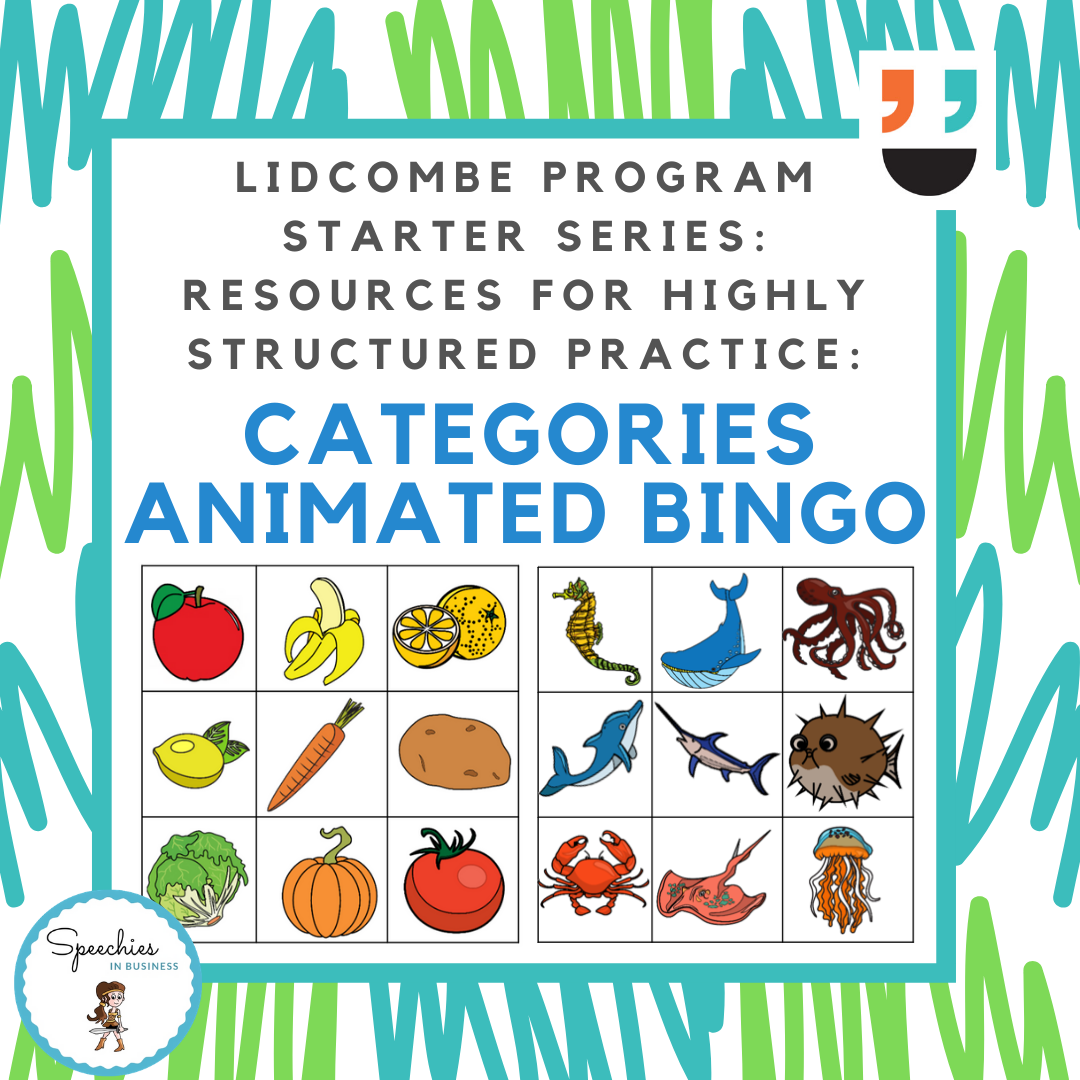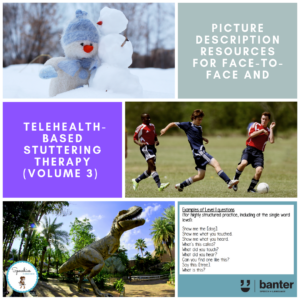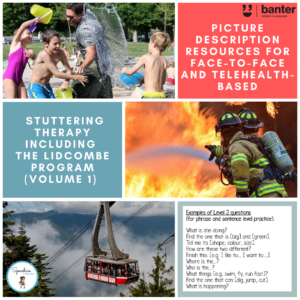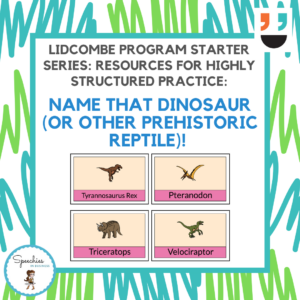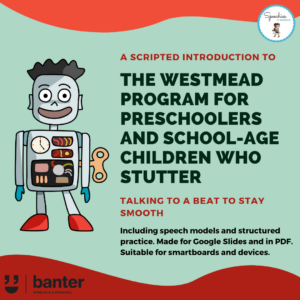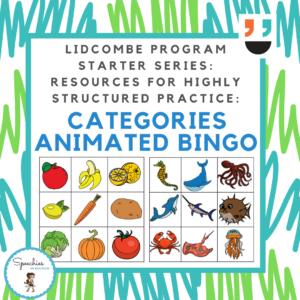(S106) Lidcombe Program Starter Series: Resources for Highly Structured Practice: Categories Animated Bingo
$5.99 including GST
With the Lidcombe Program for childhood stuttering, our first goal, usually, is to eliminate or virtually eliminate the child’s stuttering in ‘structured activities’ at home (early Stage 1). By ‘structured activities’, we mean that we set up the sessions deliberately in a way to get the child as fluent as possible, as quickly as possible, for 10-15 minutes a day.
The resource is designed for face-to-face sessions and devices, and is suitable for highly structured practice.
Description
With the Lidcombe Program for childhood stuttering, our first goal, usually, is to eliminate or virtually eliminate the child’s stuttering in ‘structured activities’ at home (early Stage 1). By ‘structured activities’, we mean that we set up the sessions deliberately in a way to get the child as fluent as possible, as quickly as possible, for 10-15 minutes a day. You can read more about the Lidcombe Program here.
To encourage stutter-free speech, it’s a good idea to set up a calm environment. Usually, this means turning off the TV, distracting any siblings (and pets) with other activities, sitting on the floor or at a table with your child, and playing simple, age-appropriate games that encourage your child to speak at a level that assists them to stay fluent.
In our free ebook, we list 10 of our all-time favourite Lidcombe Program activities, including reading a picture book together, labelling games, lotto, glue and fishing games, memory, and binary choice activities.
These days, many children respond well to digital or computer-based resources, including children doing the therapy by telehealth and when busy families want to do the therapy ‘on the move’ (or between other things).
This resource is a modified animated bingo game, with high-frequency vocabulary to be named and sorted into early categories. It is suitable for a range of expressive language tasks, including single word naming, attribute naming, category sorting, and semantic feature analysis. As the child’s fluency increases, this resource can be combined with our free carrier phrase pack to work on speech fluency and the phrase and sentence-levels.
The Bingo game is a Powerpoint presentation. There is no need to drag or drop. All you need to do is ‘play’ the slideshow (full screen) and click your mouse and the animations will do all the work! See the instructions in the pack.
The resource is designed for all devices and is suitable for highly structured practice.
Remember: You need to be trained by a qualified speech pathologist to do the Lidcombe Program properly. Among other things, you need to be able to distinguish between stuttering and stutter-free speech; and confident to give the therapy (including the required verbal contingencies) as set out in the manual.
Over the years, we’ve found that the Lidcombe Program works best when parents and children enjoy doing home practice sessions together. This resource is designed to help – particularly in the early, highly structured part of the program, or whenever necessary to help children who stutter to get and stay fluent.
In our speech pathology clinic, we have found this resource useful. We hope you do too!

